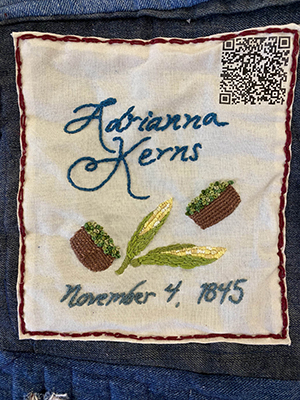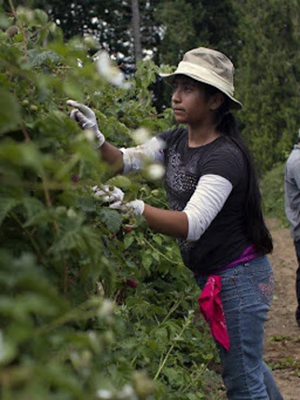Adriana Kerns
"My birthday is on the fourth of November, and I am eighty-five years old. My mother's first child was her master’s child. I was the second child but my father was Reuben Dortch. He belonged to Colonel Dortch. My father's father was a white man. He was named Wilson Rainey. At first when the old folks cut wood, me and Viney would pick up chips and burn up brush. We had to pick dry peas in the fall after the crops had been gathered. We picked two large baskets full a day. When we got larger we worked in the field picking cotton and pulling corn as high as we could reach. You had to pull the fodder first before you could pull the corn. When we had to come out of the field on account of rain, we would go to the corn crib and shuck corn if we didn't have some weaving to do. We got so we could weave and spin.” – Adrianna Kerns
 Najla Khan ’25
Najla Khan ’25
Of the nearly 250 million children working globally, 70% are working in agriculture. Even though the U.S. passed child labor laws in 1908 and 1938, farms were exempted. Today, approximately 500,000 children pick almost a quarter of the produce produced in America. According to a 2010 petition by Human Rights Watch:
Hundreds of thousands of children are employed as farm workers in the United States, often working 10 or more hours a day. They are often exposed to dangerous pesticides, experience high rates of injury, and suffer fatalities at five times the rate of other working youth. Their long hours contribute to alarming drop-out rates. Government statistics show that barely half ever finish high school. According to the National Safety Council, agriculture is the second most dangerous occupation in the United States. However, current US child labor laws allow child farm workers to work longer hours, at younger ages, and under more hazardous conditions than other working youths.
While children in other sectors must be 12 to be employed and cannot work more than 3 hours on a school day, in agriculture, children can work at age 12 for unlimited hours before and after school.
Sources
- Federal Writers' Project: Slave Narrative Project, Vol. 2, Arkansas, Part 2, Cannon-Evans. 1936
- Child Labor Fact Sheet - National Center for Farmworker Health
